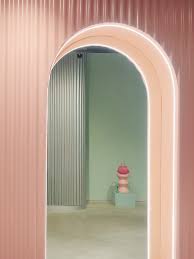The Art of Architectural Design
Architectural design is a fascinating blend of art, science, and creativity. It involves the planning, designing, and construction of buildings and structures that not only serve functional purposes but also inspire and evoke emotions. Architects are like artists who use space, form, materials, and light to create works that leave a lasting impact on those who experience them.
One of the key aspects of architectural design is the balance between aesthetics and functionality. Architects must consider not only how a building will look but also how it will be used and how it will interact with its surroundings. This delicate balance requires careful planning, attention to detail, and a deep understanding of both the physical and human aspects of design.
Architectural design also reflects the cultural, social, and historical context in which it is created. Buildings often serve as symbols of identity and values, expressing the aspirations and beliefs of a society. From ancient temples to modern skyscrapers, architecture tells the story of human civilization through its forms and structures.
Advancements in technology have revolutionized architectural design in recent years. Computer-aided design (CAD) software allows architects to create intricate designs with precision and efficiency. Sustainable design practices have also become increasingly important, with architects incorporating eco-friendly materials and energy-efficient systems into their projects.
Whether it’s a towering skyscraper, a cozy residential home, or a public park pavilion, architectural design has the power to shape our environment and enhance our lives. It is an art form that combines imagination with practicality, beauty with utility, and tradition with innovation. As we continue to push the boundaries of what is possible in architecture, we can look forward to even more awe-inspiring creations that redefine our built environment.
5 Essential Tips for Enhancing Architectural Design: Functionality, Sustainability, and Aesthetic Appeal
- Consider the functionality and purpose of the space before designing.
- Pay attention to natural light and ventilation for a more sustainable design.
- Incorporate elements of nature, such as plants or water features, for a calming atmosphere.
- Choose materials that are durable and low-maintenance for long-term quality.
- Don’t be afraid to experiment with unique shapes and angles to create visual interest.
Consider the functionality and purpose of the space before designing.
When engaging in architectural design, it is crucial to carefully consider the functionality and purpose of the space before diving into the design process. Understanding how the space will be used and what its intended purpose is allows architects to create designs that not only look visually appealing but also serve their intended functions effectively. By prioritizing functionality in design decisions, architects can ensure that the final result meets the practical needs of its users while also embodying a thoughtful and purposeful design aesthetic.
Pay attention to natural light and ventilation for a more sustainable design.
When focusing on architectural design, it is crucial to prioritize natural light and ventilation to enhance sustainability. By harnessing natural light and airflow effectively, architects can reduce the reliance on artificial lighting and mechanical ventilation systems, leading to energy savings and a more eco-friendly design. Incorporating ample windows, skylights, and strategically placed openings not only brightens up spaces but also promotes a healthier indoor environment. Sustainable architecture that maximizes natural light and ventilation not only benefits the occupants but also contributes positively to the overall environmental impact of the building.
Incorporate elements of nature, such as plants or water features, for a calming atmosphere.
In architectural design, incorporating elements of nature, such as plants or water features, can transform a space into a tranquil and calming environment. By bringing the outdoors inside, architects can create a sense of harmony and connection with the natural world. Plants not only add visual interest and freshness to a space but also improve air quality and promote well-being. Water features, like fountains or ponds, can introduce soothing sounds and reflections that enhance the overall ambiance. By integrating these natural elements into architectural design, spaces can evoke a sense of serenity and relaxation for occupants to enjoy.
Choose materials that are durable and low-maintenance for long-term quality.
When it comes to architectural design, selecting materials that are durable and low-maintenance is crucial for ensuring long-term quality. Choosing high-quality materials that can withstand the test of time not only enhances the longevity of a building but also reduces the need for frequent repairs and upkeep. By opting for durable and low-maintenance materials, architects can create structures that not only look visually appealing but also remain structurally sound and functional for years to come.
Don’t be afraid to experiment with unique shapes and angles to create visual interest.
When engaging in architectural design, it is essential not to shy away from experimenting with distinctive shapes and angles to generate visual intrigue. By exploring unconventional forms and perspectives, architects can infuse their creations with a sense of dynamism and originality that captivates the eye and sparks curiosity. Embracing unique shapes and angles in design not only adds aesthetic appeal but also opens up new possibilities for innovative spatial arrangements and creative expression within the built environment.

